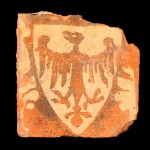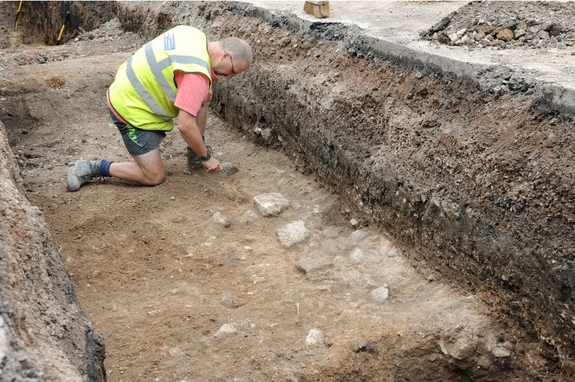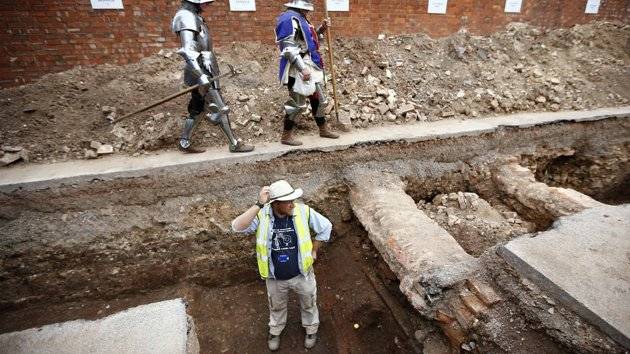Battle-Bruised Skeleton May Be King Richard III
Source: livescience.com
A human skeleton with a cleaved skull discovered beneath a parking lot in England may belong to King Richard III, researchers announced today (Sept. 12), though they have a long way to go in analyzing the bones to determine the identity.The researchers note they are not saying they have found King Richard III’s remains, but that they are moving into the next phase of their search, from the field to the laboratory.
Archaeologist Mathew Morris stands in the trench where he found skeleton remains during an archaeological dig to find the remains of King Richard III in Leicester, central England September 12, 2012. A 500-year-old mystery of where England’s King Richard III was buried after his death in battle may finally be about to be solved after archaeologists found bones beneath a city centre parking lot. A team from the University of Leicester are excavating where a Franciscan friary known as Greyfriars may house the monarch’s remains after he died at the Battle of Bosworth in 1485 - the last English king to die in battle.
"[W]e are clearly very excited, but the University now must subject the findings to rigorous analysis. DNA analysis will take up to 12 weeks," Richard Taylor, the director of corporate affairs at the University of Leicester, told reporters this morning, as recorded in a tweet.
 The remains were hidden within the choir of a medieval church known as Greyfriars, where the English monarch was thought to be buried. Though the location of this church had been lost, historical records suggested Richard III was buried there upon his death in battle in 1485.
The remains were hidden within the choir of a medieval church known as Greyfriars, where the English monarch was thought to be buried. Though the location of this church had been lost, historical records suggested Richard III was buried there upon his death in battle in 1485.Two skeletons were discovered: a female skeleton that was broken apart at the joints was discovered in what is believed to be the Presbytery of the lost Church; the other skeleton, which appears to be an adult male, was found in the church choir and shows signs of trauma to the skull and back before death, which would be consistent with a battle injury, the researchers said. [See images of the Richard III discoveries]
"A bladed implement appears to have cleaved part of the rear of the skull," according to a University of Leicester statement.
In addition, a barbed metal arrowhead was lodged between the vertebrae of the male skeleton’s upper back, Taylor said, adding that the spinal abnormalities suggest the individual had severe scoliosis, though was not a hunchback, as he was portrayed by Shakespeare in the play of the king’s name.
Even so, the scoliosis seen in the skeleton would’ve made the man’s right shoulder appear visibly higher than the left one. "This is consistent with contemporary accounts of Richard’s appearance," according to the university statement.
University of Leicester archaeologists began excavating the parking lot of the Leicester City Council building on Aug. 25, in search of the church and the king’s remains. Since then, they have turned up the Franciscan friary, a 17th-century garden thought to hold a memorial to the king and various other artifacts.

University of Leicester archeologists are digging in the Leicester City Council parking lot in search of the grave of King Richard III.
On Aug. 31, the dig team applied to the Ministry of Justice for permission to begin exhuming the two skeletons, a process that began on Sept. 4.
"We are hopeful that we will recover DNA from the skeleton," University of Leicester geneticist Turi King said at the briefing, as recorded in a tweet by the university.
The king’s tales
King Richard III ruled for England two years, from 1483 to 1485, before dying in the Battle of Bosworth Field, part of the War of the Roses, an English civil war between the House of Lancaster and the House of York.
A century later, William Shakespeare penned "Richard III," a play about the tragic king — the last English king to die in battle.
[...]
Read the full article at: livescience.com
"A car, a car, my kingdom for a car."
Painting of Richard III. Richard’s body is thought to be buried beneath an English car park.






















